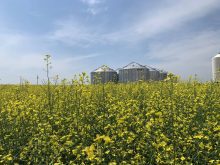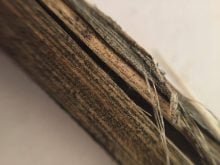After a string of dry years, the wetter conditions in 2024 saw clubroot hit Alberta hard. Genetic advances in resistant varieties have certainly helped — but clearly the disease isn’t going away.
At the CropConnect Conference last month in Winnipeg, Dr. Stephen Strelkov, a University of Alberta professor of plant pathology, provided an update on a disease that’s made significant headway on the Prairies in the past two decades — with a look at what we knew then, and know now.
“We hoped that as a soil-borne disease, it would not spread very quickly, but we found that it actually did move a lot more quickly than was observed in other regions like Europe and Asia,” Strelkov recalls.
From its initial appearance in Prairie canola in fields near Edmonton in 2003, the disease spread rapidly across Alberta, and by 2005 had also reached Saskatchewan and Manitoba. Experts attribute clubroot’s spread to contaminated farm machinery.

“The disease is now found across the Prairies, as well as in North Dakota, but Alberta is still by far the province worst hit by clubroot,” Strelkov says.
In Alberta, roughly 4,200 fields have confirmed clubroot infestations. But for perspective, Saskatchewan has only 82 fields with confirmed clubroot, and Manitoba just 45.

At least some of that discrepancy might be because Alberta’s clubroot detection programs are more extensive. Manitoba Agriculture’s clubroot web page notes that as of 2022, only 10 per cent of fields in the province had been tested.

It’s undeniable, though, that the disease is more advanced in Alberta. Experts often cite soil pH as a contributing factor: in general, Alberta has more acidic soils than the rest of the Prairies, and the pathogen likes more acidic soils.
But that might not be all that’s at play, Strelkov says. Scientists have been rethinking the relationship between soil pH and clubroot severity.
Early studies from Europe suggested a very strong relationship — but more recent efforts to quantify that relationship have indicated it’s much weaker than the European studies indicated.
“pH does play a role,” he says. “But it’s not as critical as we would have thought 15 years ago.”

A soil-borne disease, clubroot affects canola and several other brassica species. It will infect the plants’ root hairs initially, and as the pathogen develops, those root cells are corrupted. Instead of functioning like normal root cells — taking up water and nutrients — they develop these bulbous galls that stimulate cell division (much like a cancerous tumour) and choke off nutrients, ultimately leading to yield loss.
Read Also

Cancer agency reclassifies another herbicide ‘probably carcinogenic’
The WHO’s cancer research agency has now put atrazine, a herbicide well known to corn growers, in the same potential-hazard category where the agency put glyphosate.
And as the galls decompose, they’re released back into the soil, where they can infect crops in a subsequent year.
“So if you continue to grow a susceptible variety, the number of spores can quickly build up in the soil,” Strelkov says.
Yield losses
Recent work at the U of A by Andrea Botero-Ramírez, now with MacEwan University in Edmonton, aimed to develop a yield loss model that could relate disease severity to yield losses in canola.
Botero-Ramirez used a disease severity scale from zero to 100, on which zero indicates healthy plants and 100 represents severe disease.
Her research found that a one per cent increase in disease severity corresponds to a 0.6 to one per cent decrease in yield. So, for example, if a variety develops a five per cent disease severity, a farmer could expect a three to five per cent loss in yield.
“Where it falls along the line really depends on environmental conditions and how much the plants can compensate,” Strelkov says.

Clubroot management
Strelkov says the most difficult aspect of clubroot control is the persistence of these very-long-lived resting spores in the soil, which can last for up to 45 years. However, he says, there are various strategies that can help to mitigate the impact of disease.
Scouting
The primary recommendation is to scout for symptoms of clubroot and detect the disease early, before outbreaks become severe.
“If you can catch the disease while still mild, it’s a lot easier to manage it than if you have a very severe infestation,” Strelkov says.

Because the spores typically arrive on farm machinery, he recommends focusing on areas such as the approaches to your fields, as likely areas to find the disease. It can also be found in low spots in fields, he adds, because the moisture those areas retain favours infection and disease development.
Because the galls in the root system affect plants’ ability to take up water and nutrients to maintain above-ground growth, farmers should keep an eye out for wilting and yellowing areas of the field, particularly at midday.
“Typically you have these prematurely ripened dead patches,” Strelkov says. “They kind of look like sclerotinia stem rot. You would probably have to go pull out the roots to rule out clubroot.”
Indeed, while there are above-ground symptoms, the only way to tell for certain that it’s a clubroot infestation is to dig up the roots and look at them.
“Typically, younger galls are firm and whitish in colour, almost looking like ginseng. They’re quite easily recognizable,” Strelkov says. “Eventually they start to decompose, and they turn kind of a mushy brown, and they’re very soft and squishy.
Clubroot can be a little bit more difficult to recognize at this stage. But Strelkov notes that anyone who has had a clubroot infestation in their field will recognize it immediately.
Sanitation
When clubroot was first identified, sanitation was one of the very few strategies that was available to control the disease. The practice still receives top billing on Alberta’s provincial clubroot site. The idea is to remove contaminated soil from machinery so it wouldn’t spread to uninfected fields.

Alberta Agriculture has studied the effectiveness of various sanitation levels, which are divided into three steps.
The first is rough cleaning: that is, knocking off big chunks of soil and sweeping off debris. Alberta Agriculture estimates that practice removes about 90 per cent of the soil (and in turn 90 per cent of clubroot spores) on a piece of equipment. The government estimates this would take between one and two hours for a 40-foot cultivator.
The next step is fine cleaning: pressure-washing the machinery down to the metal. After these first two steps, 99 per cent of soil and spores would be removed.
The final step is disinfection, but this is used only rarely, and in situations where biosecurity is a priority. Theoretically, though, no spores would survive this step.
Any level of sanitation is beneficial to help limit the spread of the disease, Strelkov says, noting rough cleaning is usually about as far as most farmers go.
“I haven’t seen very many people get beyond that stage, at least in Alberta,” he says.

Rotation
Another early control strategy that’s still employed is crop rotation. Initial research from Europe suggested as much as four years between brassica crops, but more recent research conducted in Canada found a minimum two-year break from clubroot’s cause can be enough to keep disease levels in check.
“Field experiments with canola found a 90 per cent score reduction after two years away from canola,” said Strelkov, but he added that in severe cases longer breaks may be needed for sufficient spore decline.
There have been attempts to treat clubroot with soil amendments and chemicals, with varying degrees of success. Applying agricultural lime to increase the pH of the soil is a well-known example. Others include fungicides and fumigants — but none of these have been widely developed into canola products.
Genetic resistance
Genetic resistance has become the most important tool in managing clubroot today.
The very first clubroot-resistant variety was released in 2009 by Pioneer Seeds. Since then, dozens of varieties with clubroot resistance traits have been introduced and the majority of canola acreage today is seeded to resistant varieties.
The early widespread adoption of those resistant cultivars has become an important clubroot management tool. Seeding resistant varieties, before clubroot has been detected in a field, can help prevent the establishment of the disease, Strelkov says.
“Let’s say a piece of equipment is brought in with spores aboard; it’s better that the first host those spores encounter is a resistant variety,” he says, because “it’s much less likely they’ll be able to infect it and reproduce and become established.”
Resistance to resistance
Unfortunately, Strelkov notes, the intensive use of clubroot-resistant canola can drive shifts in the pathogen variants.
“If you keep growing the same resistance type over and over again, you start getting symptoms developing on what used to be a resistant variety,” he says, due to what are called resistance-breaking pathotypes.
More than 10 per cent of the fields in Alberta have issues with resistance-breaking pathotypes. In Manitoba and Saskatchewan, there are still very few instances where resistance-breaking strains were identified: just two in Manitoba and one in Saskatchewan, Strelkov says.
These new pathotypes emerged after the use of first-generation resistant crops became widespread. In response to these resistance-breaking pathotypes, many canola varieties now feature what’s called second-generation resistance.
While in some cases these second-generation resistant varieties do provide better protection against clubroot, recent research assessing the performance of these varieties shows better protection isn’t guaranteed.
“Some second-generation cultivars offer significantly better resistance, while others perform similarly or even worse than the first generation,” Strelkov says. “It appears to depend on the specific variety we’re testing and the specific pathogen variants that we’re testing against.”
Nevertheless, planting some kind of first- or second-generation resistant variety is still highly recommended as part of the suite of management tools available to farmers.
“Integrated management of clubroot is essential; combining genetic resistance, crop rotation, sanitation and pathogen surveillance to see what the situation is,” Strelkov says.
















